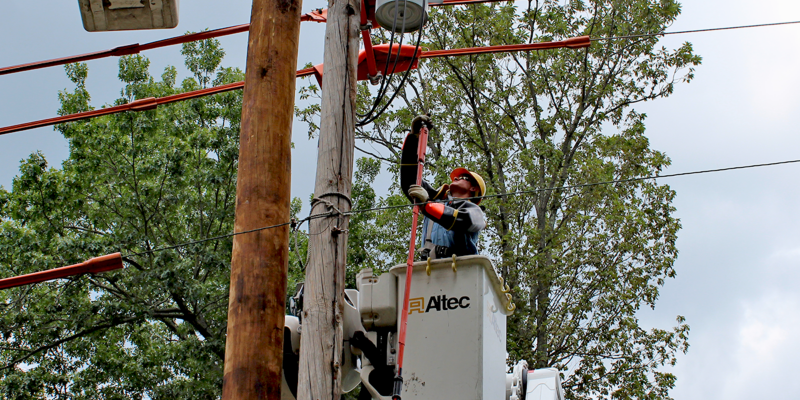Keystone State System Is CFC’s Latest 100% Borrower

Bedford Rural Electric Cooperative recently became the 11th (out of 13) electric distribution cooperative in Pennsylvania to sign on as a 100% CFC borrower.
The south-central Pennsylvania cooperative’s 9,000 members are 92% residential and seasonal customers—a mix that historically has resulted in slow but steady growth that is not strongly affected by the highs and lows of the economy, said Brooks Shoemaker, Bedford Rural Electric general manager and CEO.
“But in today’s world, we face the same challenges that others face, including the lack of a reliable, predictable supply chain and increasing costs across the board,” Shoemaker explained. “We have been able to hold the line on our distribution rates. However, we were forced to increase our generation and transmission rates by an average of 11% in January.”
Bedford REC receives wholesale power from G&T Allegheny Electric Cooperative. “It is a very favorable partnership,” Shoemaker said. “Allegheny Electric passes along some of the most attractive rates in Pennsylvania. Our rates are much lower than our neighboring investor-owned utility.”
To improve service to members, Bedford Rural Electric has been investing in its system infrastructure, including undertaking several major line rehabilitation projects in recent years. This has involved replacing poles and wires from the late ’40s, ’50s and early ’60s with new poles and conductors, as well as line extensions, substation rehabilitation work and multiple bridge replacement and relocation projects.
Aggressive Approach to Rebuildling Its Aging System
“For the last 30 years, we have undertaken an extremely aggressive replacement and rehabilitation program to rebuild our aging system,” Shoemaker said.
With the bulk of that work completed, Bedford is now in the early stages of a $12 million–$15 million project to replace its 70-year-old corporate office.
“To lessen the financial impact of this building project, we are scaling back our system improvement projects to a more traditional level,” Shoemaker said.
Bedford chose to buy out existing debt from another lender and become a 100% CFC borrower—primarily to take advantage of CFC’s responsiveness and ease of doing business.
“As we embark on the building project, we decided that the project would be much less onerous if we were a 100% CFC borrower,” Shoemaker said. “Building codes are onerous themselves at times, and we were reluctant to add additional regulation to this project.”
Shoemaker added that CFC’s industry knowledge, accessibility and professionalism sealed the deal.
“CFC has always been available to help, talk about issues and provide their perspective about topics that we are experiencing here in Bedford,” he said. “It’s also reassuring to know that subject matter experts are a phone call away, if necessary.”
The buyout experience itself was “pain free,” Shoemaker said. “CFC was very accommodating and patient as we thought our way through the process,” adding that in his experience, CFC is “very professional, knowledgeable and responsible, with a minimum of red tape. What’s not to like!”